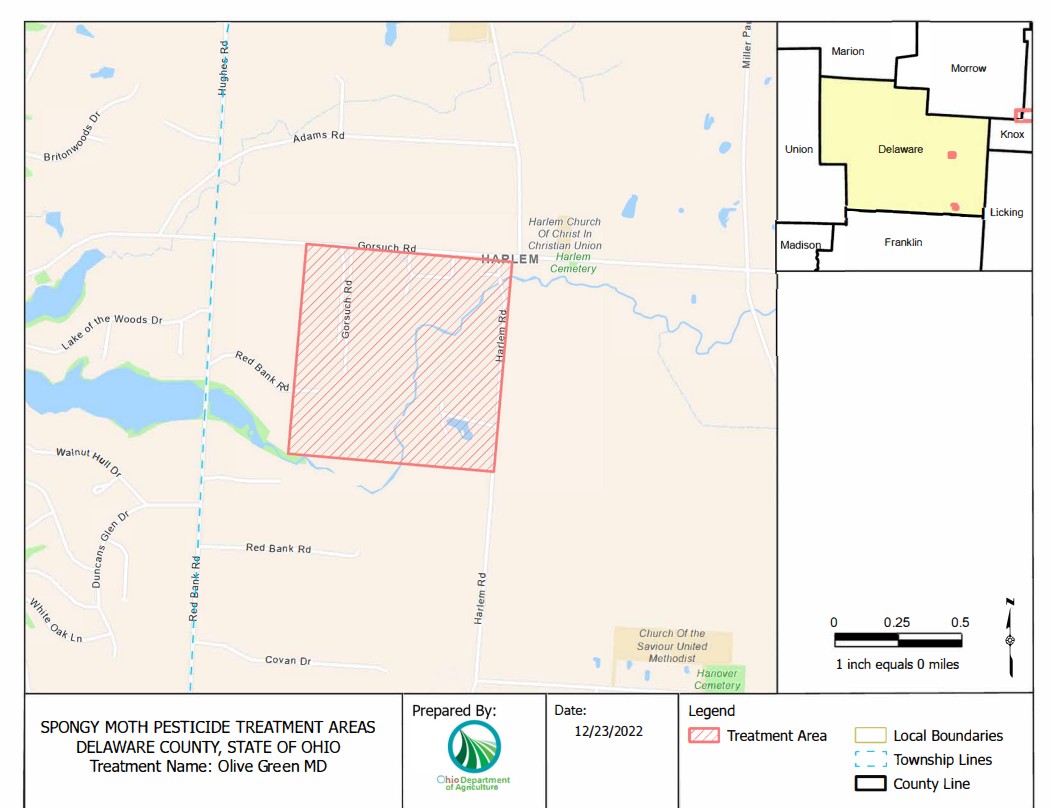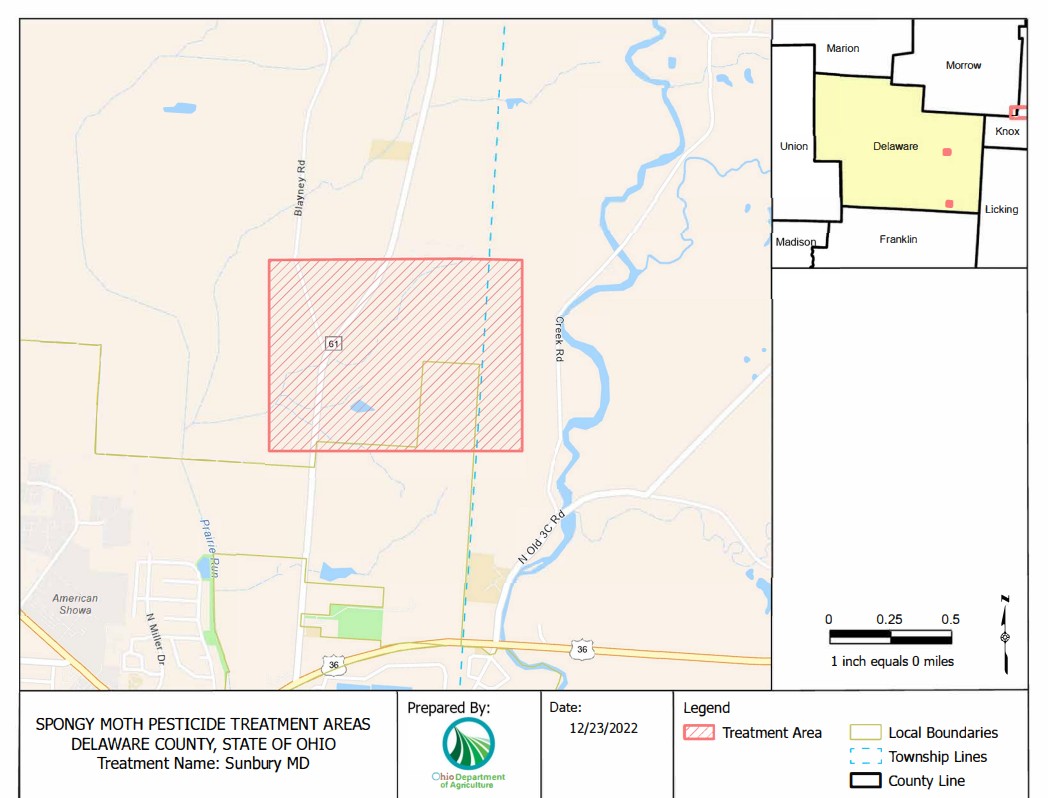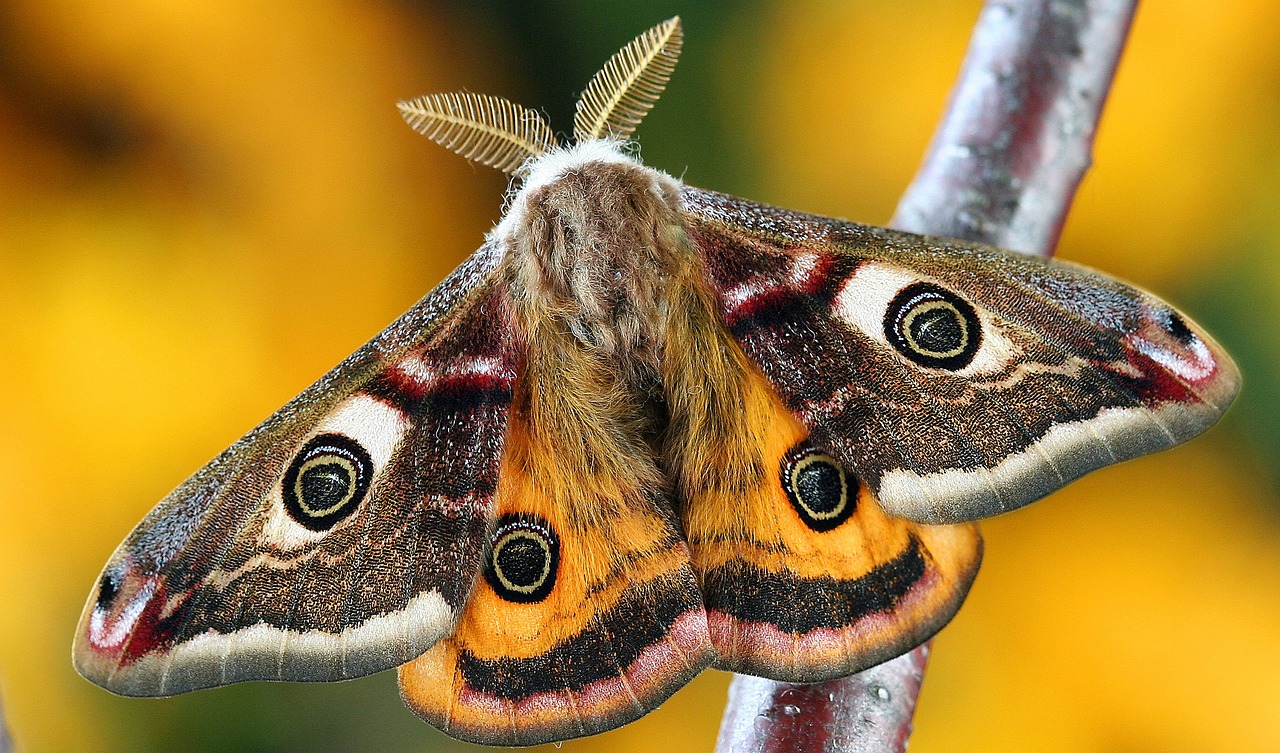By 1808Delaware
The Ohio Department of Agriculture (ODA) successfully completed spongy moth treatments in two Delaware County locations, Olive Green MD and Sunbury MD.
Invasive Species Control
The spongy moth, Lymantria dispar dispar, also known as the European gypsy moth, is a non-native, invasive species that poses a substantial threat to Ohio’s tree and shrub populations. Each summer, ODA deploys approximately 12,000 moth traps across the state to monitor movement, evaluate, detect and delineate newly established colonies. Treatment areas and application rates are determined in the fall, based on catch numbers and available funding.
An egg mass laid by a single female spongy moth can contain between 500-1,000 individual eggs. Once hatched, these larvae feed on the leaves of over 300 different tree and shrub species. In heavily infested areas, the spongy moth can completely strip the infested trees, causing permanent damage or death to a healthy tree within two years of defoliation. Currently, 51 of Ohio’s 88 counties have established populations and are under state and federal quarantine rules.
Aerial Treatments
ODA utilized a novel approach in their recent efforts to control the spongy moth population. Aerial treatments were carried out, using a product known as SPLAT GM-O, that disrupts the mating cycle of these moths.
Unlike more traditional pesticides, SPLAT GM-O does not kill the moth directly. Instead, it confuses the male moths during their search for female mates, disrupting the mating process. SPLAT is an organic and biodegradable formula that poses no threat to humans, animals, birds, bees, or plants.
Monitoring and Future Efforts
Ohioans can keep themselves updated on treatment blocks and progress across the state through the ODA’s Spongy Moth website or by calling 614-728-6400. The ODA uses three primary programs to manage the Spongy Moth population in Ohio: suppression, slow-the-spread, and eradication.
Treatment Locations
The most recent treatments were applied to two areas in Delaware County:
- Olive Green MD, with an estimated treatment area of 290 acres
Sunbury MD, with an estimated treatment area of 260 acres
For more detailed information about the Spongy Moth or specific treatment locations, you can visit ODA’s Spongy Moth webpage.
In their continuous efforts, ODA is striving to slow down and control the advancement of the Spongy Moth infestation to preserve Ohio’s rich biodiversity.


Source, Photos: ODNR; Image by Ian Lindsay from Pixabay









